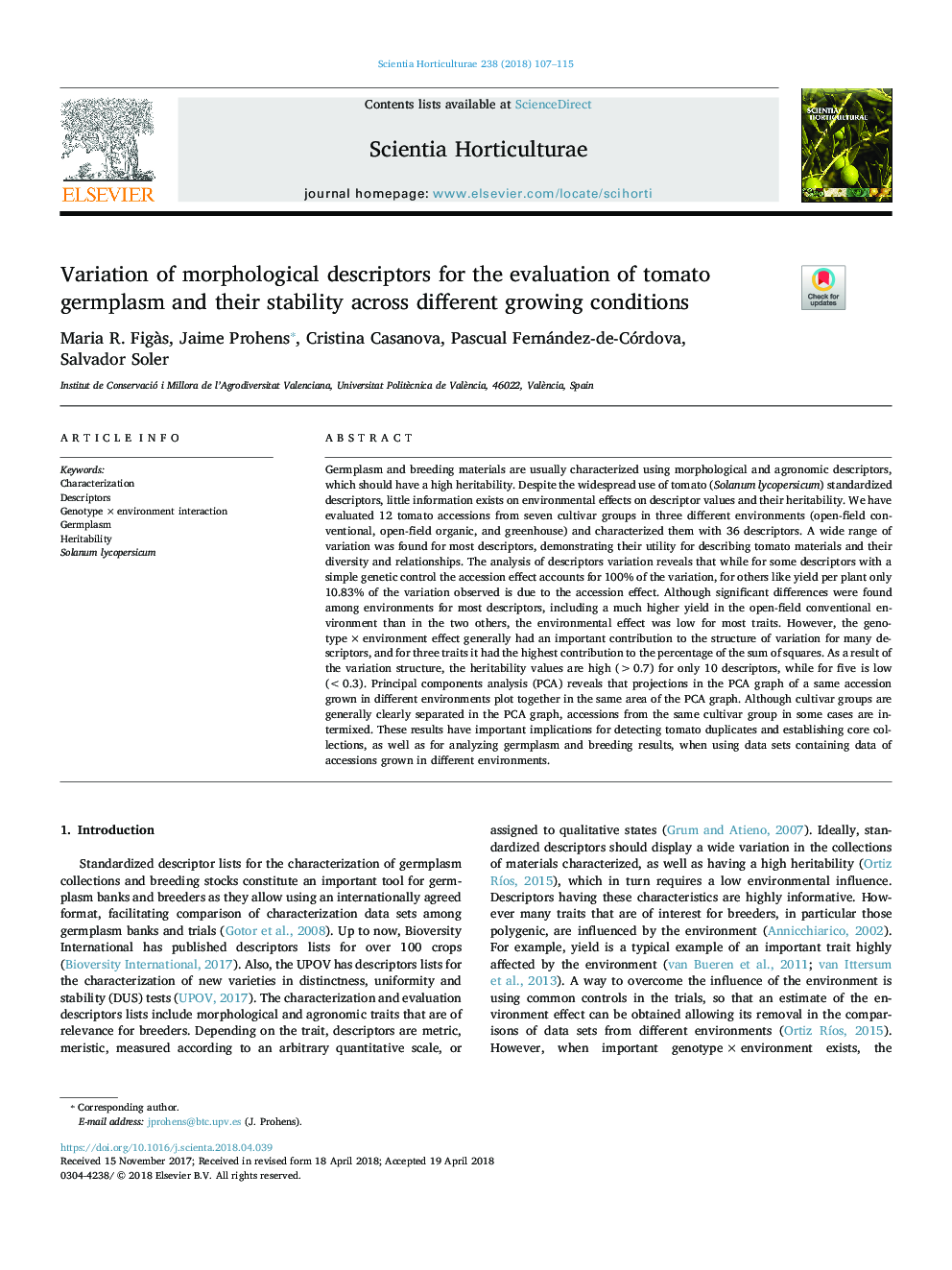| Article ID | Journal | Published Year | Pages | File Type |
|---|---|---|---|---|
| 8892500 | Scientia Horticulturae | 2018 | 9 Pages |
Abstract
Germplasm and breeding materials are usually characterized using morphological and agronomic descriptors, which should have a high heritability. Despite the widespread use of tomato (Solanum lycopersicum) standardized descriptors, little information exists on environmental effects on descriptor values and their heritability. We have evaluated 12 tomato accessions from seven cultivar groups in three different environments (open-field conventional, open-field organic, and greenhouse) and characterized them with 36 descriptors. A wide range of variation was found for most descriptors, demonstrating their utility for describing tomato materials and their diversity and relationships. The analysis of descriptors variation reveals that while for some descriptors with a simple genetic control the accession effect accounts for 100% of the variation, for others like yield per plant only 10.83% of the variation observed is due to the accession effect. Although significant differences were found among environments for most descriptors, including a much higher yield in the open-field conventional environment than in the two others, the environmental effect was low for most traits. However, the genotypeâ¯Ãâ¯environment effect generally had an important contribution to the structure of variation for many descriptors, and for three traits it had the highest contribution to the percentage of the sum of squares. As a result of the variation structure, the heritability values are high (>0.7) for only 10 descriptors, while for five is low (<0.3). Principal components analysis (PCA) reveals that projections in the PCA graph of a same accession grown in different environments plot together in the same area of the PCA graph. Although cultivar groups are generally clearly separated in the PCA graph, accessions from the same cultivar group in some cases are intermixed. These results have important implications for detecting tomato duplicates and establishing core collections, as well as for analyzing germplasm and breeding results, when using data sets containing data of accessions grown in different environments.
Related Topics
Life Sciences
Agricultural and Biological Sciences
Horticulture
Authors
Maria R. Figà s, Jaime Prohens, Cristina Casanova, Pascual Fernández-de-Córdova, Salvador Soler,
